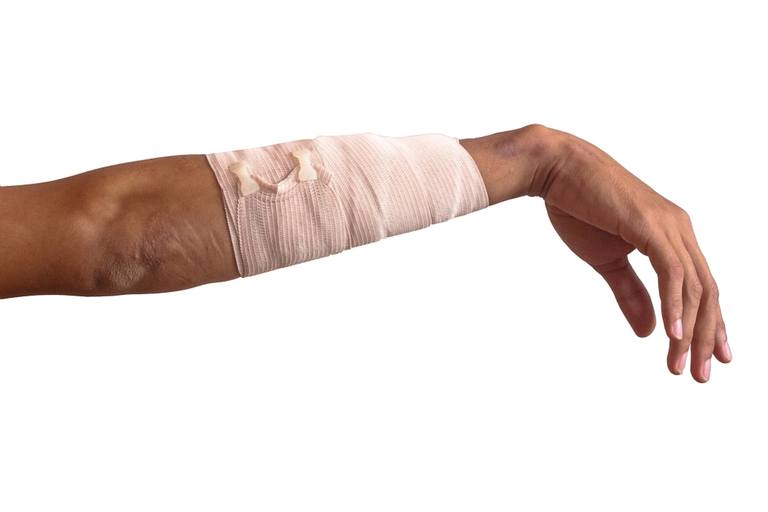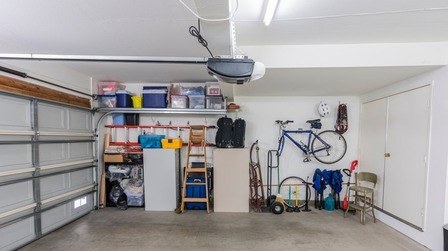Whether you’re going to be in the woods or in the backcountry, it is important to equip yourself with some basic yet essential survival skills, such as how to treat cuts, scrapes, and gouges in the backcountry.
You should know what to prepare in your first aid kit, what to do during emergencies, and so on. In today’s post, we’ve included all that information for you.

How To Treat Cuts, Scrapes, And Gouges In The Backcountry
You will need:
- Portable water
- Irrigation Syringe
- Tweezers
- Ointment or Antibiotic cream
- Tincture of benzoin
- Betadine
- Gloves
- ACE/elastic wrap
- Gauze pads and bandages
Treatment process
The process includes the following steps:
1. Control the bleeding
2. Minimize the risk of infection (including cleaning the cut, scape, or gouge + deciding whether to suture or leave the wound open)
3. Promote healing (including dressing the wound + keeping an eye out on the wound for infection)

Control The Bleeding
Sanitize your hands first.
Examine the wound situation.
If it bleeds slightly, uses the direct pressure method:
Wear gloves. Directly use your hands to apply pressure onto the wound. The heavier the bleeding, the more pressure to apply. Keep pressing the bleeding site for several minutes.
On the contrary, if the wound bleeds heavily, use the pressure dressing method:
Directly place a gauze pad or a clean t-shirt in (or on) the bleeding site. Use a gauze wrap to bandage and secure the dressing. For heavier bleeds, use an elastic wrap for extra bleeding control ability.

Look out for the bleeding condition within two hours. If bleeding is decreased or stopped, loosen the dressing. If it continues, reapply.
When to consider a tourniquet?
Considering a tourniquet when the situation surpasses all these requirements:
- The two methods above fail
- You’ve been instructed professionally and get certification to apply a tourniquet
- There are some 2” and 4” army battle dressing pads and clean clothes available in your first aid kit
Minimize The Risk Of Infection
Cleaning the cut, scape, or gouge
Only clean the wound when it has stopped bleeding already.
Sanitize your hands. Wear a pair of medical gloves. Remove the dressing.

Use a sterile gauze pad and start scrubbing around the wound to clean off dirt and debris. Make sure to not push them into the wound.

For large pieces of debris, use tweezers to remove them. Remember to boil the tweezers or sanitize them with povidone-iodine liquid. Besides, be careful when using tweezers to not rupture blood vessels.

Then, use at least 500ml of potable water and pour at a perpendicular angle from 1”-2” away.
For deeper wounds, use a wound-spraying tool, such as a plastic 35cc syringe to clean them.
What to do if you don’t have portable water at hand?
Here are some good alternatives:
- Disinfected water (by cooling, boiling, using chlorine dioxide drops, using iodine tablets, or filtering)
- 1% Povidone-iodine solution + disinfected water: Irrigate povidone-iodine liquid on the obviously contaminated or dirty wound, make sure to rinse it with disinfected water to remove lingering solution

Inspect the wound if it has open fractures.
Deciding whether to close or leave the wound open
When to close the wound: low-risk wounds
When to leave the wound open: Serious punctures, crushing injuries, and animal bites with high risks of infection
How to close the wound?
Carefully shave or remove the hair around the wound, then apply a tincture of benzoin around it (not the inside).
Apply gentle pressure to make the wound edges touch together. You can make the skin safely stickier by applying Mastisol Liquid Adhesive if available. For neat, clean cuts (such as knife slips), use Dermabond or FDA-approved Superglue.
Then, use duct tape, a ¼”-1/2”- wide medical strip, and an improvised closure strip or butterfly bandage to secure it.

Consider applying ointment or antibiotic cream over the wound. Dress it.
What to do when leaving the wound open?
After cleaning, pack the wound with moist, sterile gauze, then dress it. Consider using antibiotics.

Replace the packing and dressing every 12 hours. Be careful to not cause the wound to restart bleeding.

Promote Healing
Dress the wound
Apply a sterile dressing, such as a semi-permeable membrane or a gauze pad.

Use a non-stick dressing or surgical fabric tape to cover it.
If you are out of gauze, boil the used ones, dry, and reuse them. If you don’t have gauze, use clean clothes or boil them if they are dirty.
Keep an eye out on the wound for infection
Symptoms of infection
The wound might have these symptoms of infection, such as redness, stinky smell, ooze, and swelling.

To deal with them: clean the wound again. Heat compresses 20 minutes, three times/day. For serious wounds, splint and immobilize them. Use antibiotics.
When to take the victim to a hospital?

Take the victim to a hospital as soon as possible (within 6 hours) to avoid deadly sepsis if they are unresponsive, vomit, nausea, get fever, chills, weakness or the wound can’t heal despite appropriate care.
Extra note: With closed wounds that have any symptoms of infection, reopen and leave them open.
Extra tips:
Shocks might happen to the victim after the bleeding is stopped. Here are some common symptoms of shock:
- Shallow breathing
- Nausea
- Clammy, cool, or gray skin
- Rapid pulse
- Weakening
What to do:
Let the victim lay down on a flat surface. Lift their feet 6”-10” higher than the head level and keep them reasonably hydrated and warm. If the victim vomits, turn them to the side to avoid choking.
Conclusion
Above are all the pieces of information you need to know to treat cuts, scrapes, and gouges in the backcountry. Even if the wound is small, don’t underestimate it because the infection could happen if it isn’t treated properly.
Above all, keep calm to make the best decision in such emergencies. We hope the post was helpful to you. Thanks for reading!






